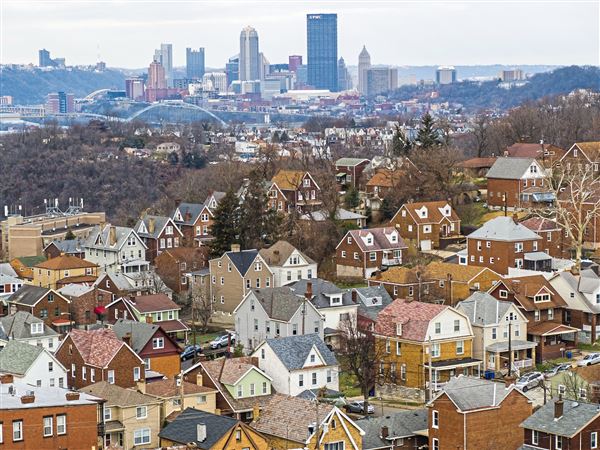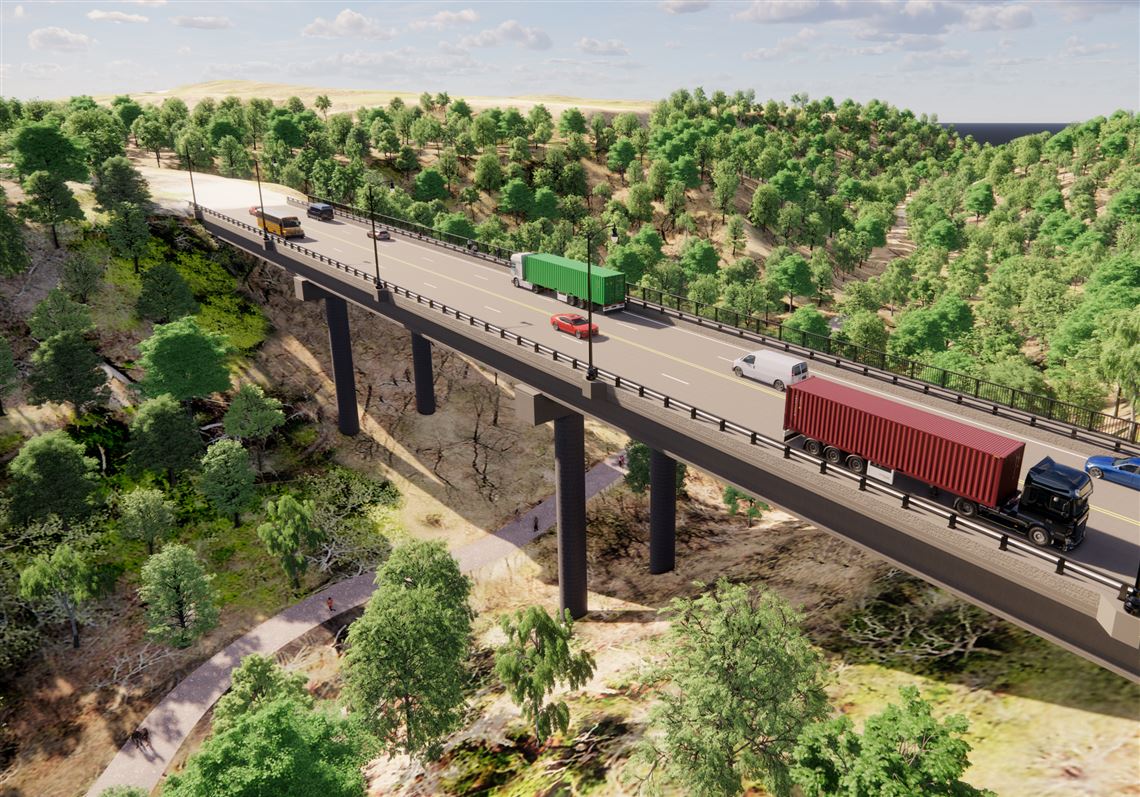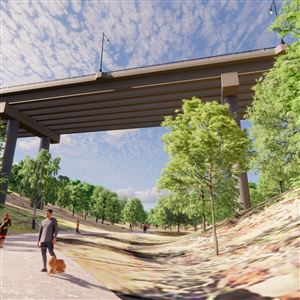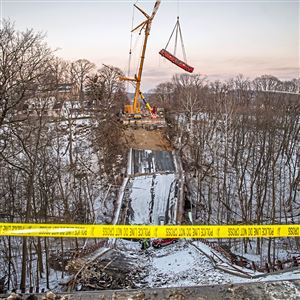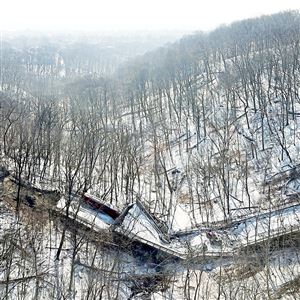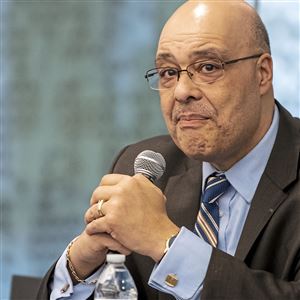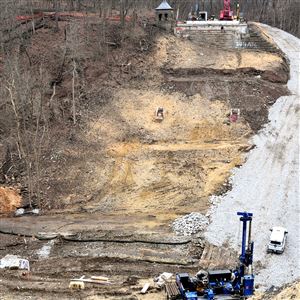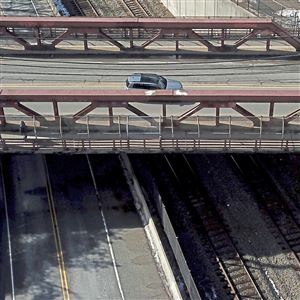Construction could begin in late April on a replacement for the Fern Hollow Bridge, the span on Forbes Avenue between Squirrel Hill and Point Breeze that collapsed Jan. 28, the Pennsylvania Department of Transportation announced Tuesday.
The new bridge, which will begin with construction of the substructure while design work continues, will be made of composite pre-stressed concrete I-beams and most of the construction will take place this year, said Cheryl Moon-Sirianni, PennDOT’s district executive. The department is overseeing the replacement of the bridge for Pittsburgh under an emergency grant of $25.3 million from the federal Department of Transportation.
The completion date will depend on how quickly the pre-cast concrete beams are available, she said. The final cost also won’t be determined until the final piece of design is completed, but it could be less than the full grant, which would leave money for other projects, she said.
“We’re going to build from the bottom up, starting with the substructure,” she said. “With this design-build approach, we can still be putting the finishing touches on [the design for] the top while we’re working on the substructure.”
That’s good news for neighbors and advocates concerned about the plain design and configuration of the deck for the new bridge.
Under ordinary circumstances, a project is fully designed and put out for bids before work begins, but with the emergency declaration PennDOT was able to choose the designer and contractor in advance so they could work together and complete the project faster.
Ms. Moon-Sirianni said the team of international design firm HDR and general contractor Swank Construction Co. of New Kensington settled on the design in consultation with the city and various civic and historical groups. A shortage of steel “absolutely” played a major role in choosing pre-cast concrete, she said, noting that using specialty steel could have added 18 months to two years to construction.
“It would have taken substantially longer to get steel and even longer to get specialty steel,” she said.
The bridge will have a fairly simple design with two sets of open columns that look like double capital Ts on each side. That will be different than the previous design, which had supports on each end to avoid intrusion into Frick Park underneath it.
The design team will continue to work with the Pittsburgh Parks Conservancy and the Pittsburgh History & Landmarks Foundation on aesthetic elements of the project, including the possibility of “treatments to the concrete pier columns and bridge barriers, painting of the beams, a stream restoration plan, ornamental bridge lighting,” PennDOT said in a news release announcing the design.
The department also will plant trees and restore any damaged areas of the park.
Ken and Linda Krynski, who live adjacent to the Point Breeze side of the bridge, said they weren’t happy with the proposed appearance of the bridge and are glad changes still could be made.
“It looks industrial,” said Mrs. Krynski, noting how quiet the neighborhood has been with the bridge closed. “It looks like something that should go over a river, not over that beautiful park. We don’t want to see it rushed if we can take a little more time to make it look better.”
Ms. Moon-Sirianni said the bridge will remain the same length and width, so there won’t be time-consuming work changing the road approaches at each end. There will be four 10-foot-wide travel lanes, two-foot-wide shoulders on both sides, a five-foot-wide sidewalk on the north side and a 10-foot, 5-inch-wide shared-use path for bicyclists on the southern side of the bridge.
Scott Bricker, executive director of Bike PGH, said PennDOT should take another look at the configuration of the bridge. For safety reasons, he recommended two lanes for motor vehicles, a reduced speed limit and bike lanes on each side of the bridge as well as better crosswalks at entrances to the park.
“I do not think Forbes has enough traffic that it needs to be four lanes,” Mr. Bricker said. “We definitely want to see a bridge reopened. We’re also going to have it for the next 100 years, so we want to do it right.”
Currently, crews are performing field work, including surveying, core borings and lab testing as part of geotechnical investigation, and environmental assessment as cleanup of the collapse continues. They have installed erosion and sedimentation controls such as compost filter socks, rock check dams, stream crossing utilizing crane mats, and stabilizing disturbed areas with straw and seed.
The collapsed bridge, which had been rated in poor condition for more than 10 years, injured 10 people. The cause is under investigation by the National Transportation Safety Board, which could take 18 months to reach a decision.
Ed Blazina: eblazina@post-gazette.com, 412-559-2092 or on Twitter @EdBlazina.
First Published: March 8, 2022, 2:56 p.m.
